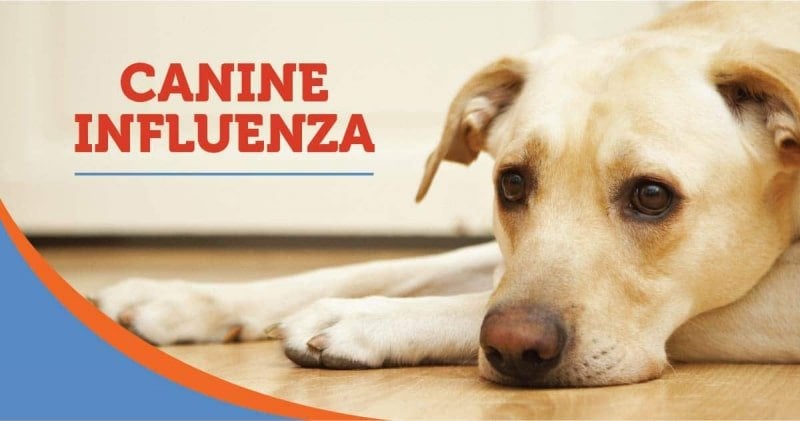Canine Influenza Virus (CIV) and Its Symptoms
Canine Influenza Virus (CIV) or canine flu is a viral disease in dogs that affects their respiratory airways. The virus-infected animal can infect other dogs and, therefore, must be isolated. Canine flu can present differently: as a benign disease or can develop complications. The latter is less common but more dangerous. The major symptoms of Canine Influenza include nasal secretions, coughing, and sneezing.
The first case of CIV was reported in 2004, among racing dogs in Florida. According to researchers from the Washington Animal Disease Diagnostic Laboratory, at present, two types of canine flu have been identified — H3N8 and H3N2. The latter occurred in Chicago in 2015 and has a high mortality rate.
What Are the Causes of Canine Influenza Virus?
The two most common symptoms of the H3N8 type are a cough that lasts for about two weeks and high fever. The problem with a cough is that it cannot be suppressed with drugs or any other treatment during this period of time. The fever reaches 100ºF, but this symptom is usually observed in the case of pneumonia. The AKC Canine Health Foundation has released a bulletin saying that the signs of the disease can be mild (cough, nose discharge, vomiting, etc), begin as mild but then get worse or severe, which includes pneumonia.
CIV is transmitted from one dog to enough when the infected animal coughs or is kept close to other animals. Also, other dogs can get infected if they drink from the same bowl or play with the same toy as the sick dog do. Apart from that, humans can act as disease carriers if they come in contact with the infected dog. Keep in mind that the virus remains active on surfaces for two days, on clothing for the whole day, and on hands for several hours. That is why it is crucial to take precautionary measures, thoroughly washing hands with soap and cleaning and disinfecting surfaces.
Scientists from Cornell University warn that dogs that are kept in closely confined spaces such as boarding kennels or shelters run a greater risk of getting the infection. The virus is usually transmitted when a dog is relocated from a shelter to another location. The statistics show that up to 80% of the dogs which have come in contact with the infected animal are exposed to the virus. That said, the mortality rate is low and the infected dog generally dies as a result of other complications.
What makes a CIV infection dangerous is that it weakens the animal’s defense mechanisms of the respiratory tract. Dogs may cough for weeks but they will not become contagious until they get a secondary infection.
How Is CIV Diagnosed?
It isn’t an easy task to diagnose canine influenza simply by its symptoms as they are similar to those associated with other respiratory diseases — coughing and nasal discharge. Canine Influenza can be diagnosed by testing nasal secretions and serum. The former allows detecting CIV infection while the latter is studied to confirm the diagnosis.
It is important to pick up samples no later than four days after the dog became sick. The thing is that after this period of time virus may not be detected by these tests. However, examining samples of serum is considered to be more accurate and is particularly helpful in the case of false negative results from nasal secretion tests.
How to Treat CIV-Infected Dog
You should never try to cure your pet using human drugs as it can have severe consequences for the dog. The most correct decision is to call a veterinarian and to do necessary tests to find out the cause of the ailment. That said, do not walk your dog outsides and keep it warm until the coughing ceases. This will help your pet recover quicker and will prevent transmitting the disease to other dogs.
Experts from the University of Florida note that the CIV treatment includes primarily supportive care. There is no specific treatment for this disease, given that in most cases, there is a need to treat secondary infections. For this purpose, antibiotics are generally prescribed for dogs showing the symptoms of this disease. Keep in mind that cough may last for up to a month and the better solution seems to be just to wait it out. In the case of pneumonia, hospitalization may be required.
Prevention
Scientists from Washington State University say that a vaccine has been developed to prevent the symptoms associated with the H3N8 type of the virus. However, it is recommended for use only when there is a real risk of the dog being infected, which depends on whether CIV was registered at your location or in the region that you are going to visit with your dog. Visit your veterinarian to decide whether this vaccine is needed in your particular case. As for vaccine against the other and more dangerous type of canine flu, H3N2, it exists but the efficacy of this vaccine has not been confirmed yet.





